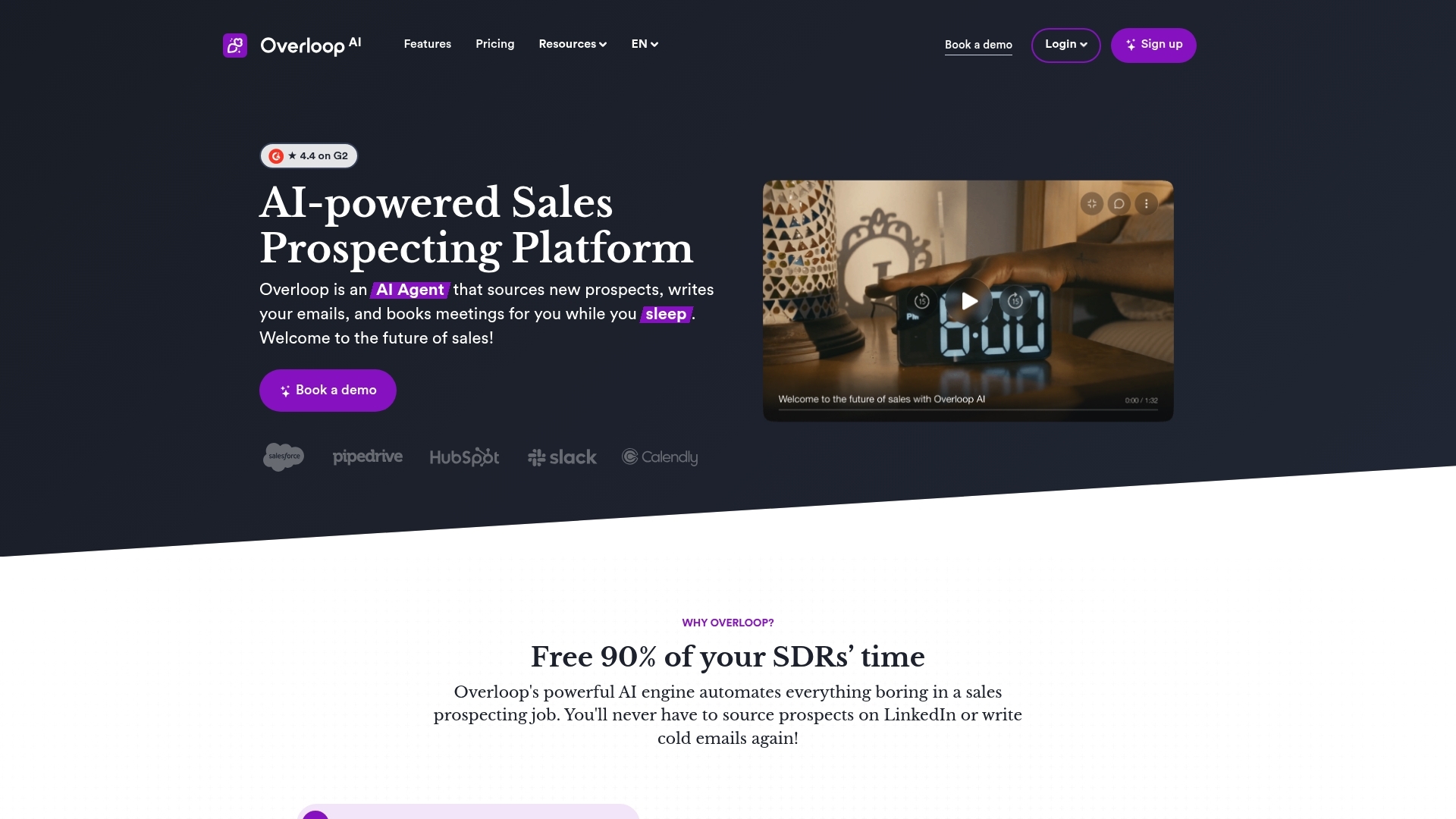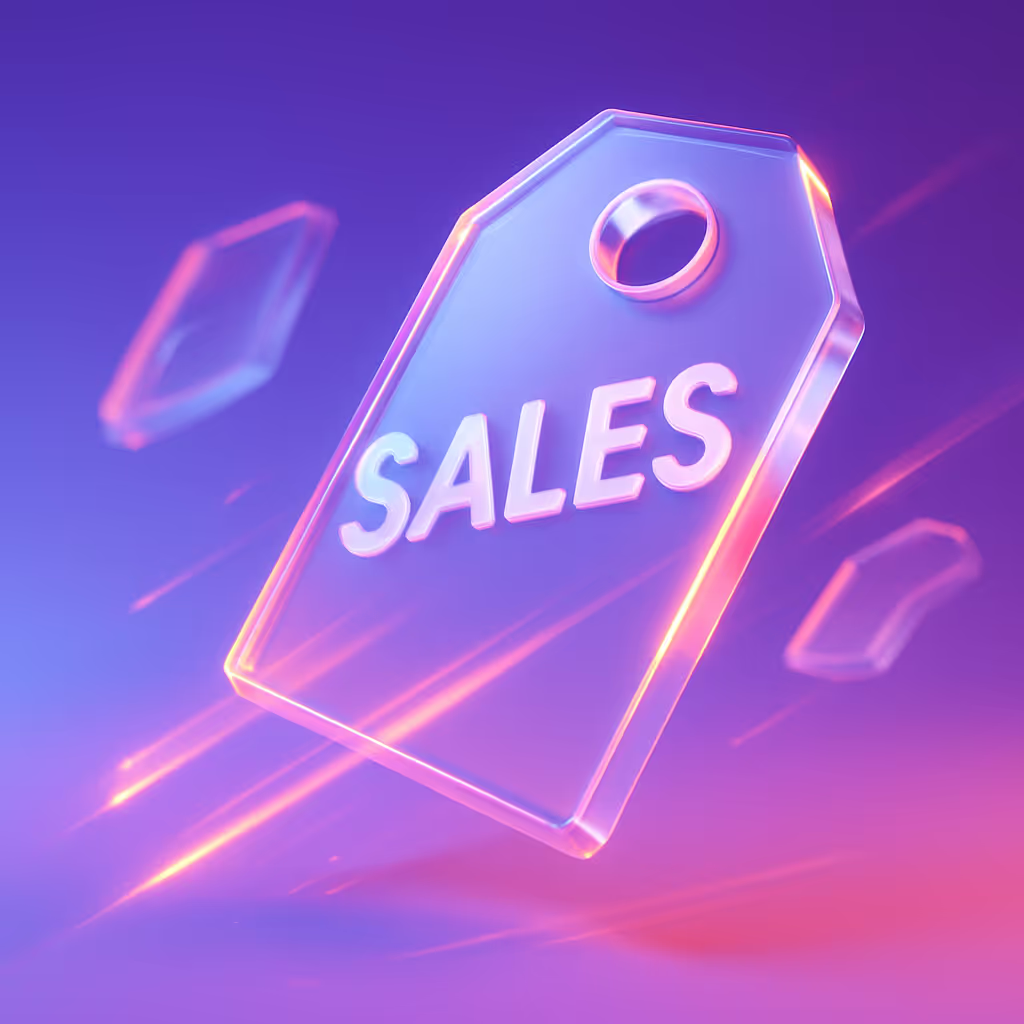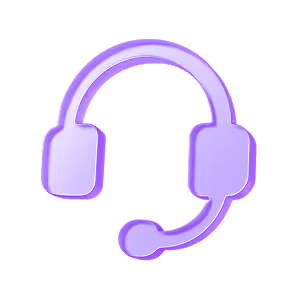In B2B sales, following up with prospects consistently is essential for success.
Research shows that most deals require multiple touchpoints before contact is made or a conversation turns into an opportunity. Yet sales teams often struggle to keep up with this demand. They juggle busy calendars, dozens of leads, and the pressure to prioritize only the best prospects—a setup that makes manual follow-up easy to forget or delay.
Why Follow-Ups Are Missed
Several obstacles get in the way of effective follow-up:
- Repetitive manual tasks drain time and energy.
- Salespeople manage outreach across different channels without a centralized process.
- Important leads get lost in spreadsheets, emails, or outdated CRM entries.
- Teams often worry about overwhelming prospects or sending impersonal messages.
The result is missed connections and lost opportunities—an issue that compounds with growing lead lists. These missed follow-ups slow down pipelines and weaken revenue targets. This gap is why more sales teams are searching for smarter, automated ways to handle outreach, with AI solutions such as Overloop aiming to make consistent, multi-channel follow-ups both easier and more effective.
Ai Email Assistants: The Modern Solution to Follow-Up Fatigue
Manual follow-ups have long drained time and energy from B2B sales teams. Most reps spend hours chasing prospects, sending reminders, and tracking responses—often with little to show for their effort. AI email assistants are ending this cycle by automating the most repetitive parts of the process, allowing sales professionals to focus on active conversations and high-probability opportunities rather than endless admin.
Automating the Repetitive, Amplifying the Personal
AI email assistants use large datasets and advanced algorithms to manage follow-up sequences far more efficiently than manual outreach. They can schedule emails, analyze recipient behaviors, and trigger timely responses based on real actions, not just a static calendar. Instead of sending generic reminders, these tools generate context-aware, personalized messages that address the recipient’s interests, prior replies, or engagement with earlier touchpoints.
- Set rules for timing, frequency, and messaging based on prospect status.
- Personalize content using data fields like name, role, company, or recent activity.
- Identify warm leads by tracking opens, clicks, and replies across campaigns.
What sets platforms like Overloop apart is their ability to consolidate multi-channel engagement, weaving email, LinkedIn, and other touchpoints into a single automated strategy. These assistants do not just replicate human effort—they increase consistency, reduce error, and adapt in real time, which makes follow-ups both smarter and more scalable.
Why Sales Teams Are Making the Switch
The value is clear: AI manages the follow-up workload while preserving a human tone. Outreach becomes timely, relevant, and continuous, all with minimal manual oversight. With tools like Overloop that blend automation with deep personalization, sales teams are now free to focus effort where it matters most—building relationships and closing deals.
Multi-Channel Follow-Ups: Why One Channel Is Never Enough
Sales outreach has changed because buyers no longer stick to a single channel when engaging with brands. Prospects read emails on their computers, scroll through LinkedIn on their phones, and respond to messages at unpredictable times. Relying on only one channel means many touchpoints miss their mark or get lost in crowded inboxes.
Adapting to Buyer Preferences Across Channels
Today’s B2B buyers expect personalized, timely communication—and they often prefer certain channels or combinations. A decision maker might ignore cold emails but respond quickly to a LinkedIn InMail. Others may notice a brand after seeing a sequence of follow-ups in both their inbox and LinkedIn feed. This shift makes an integrated, multi-channel approach not just useful but necessary:
- Email: Formal introductions, in-depth information, and resources.
- LinkedIn: Building familiarity, social proof, and light engagement.
- Other Channels: Depending on your audience, consider SMS or phone (only with proper consent).
Creating Cohesive Multi-Channel Sequences
Consistency and timing are now critical. Multi-channel sequences ensure prospects see your outreach organically, wherever they spend time. Coordinated outreach avoids spamming and respects channel etiquette. AI email assistants, like those offered in Overloop, streamline this process by managing timing, personalizing content across channels, and adjusting based on engagement events.
This approach lets sales teams focus less on repetitive outreach and more on building relationships—meeting buyers where they prefer to respond. Embracing multi-channel strategies aligns outreach with real buyer behavior, boosting the odds of meaningful engagement at every step.
Step-by-Step: How to Automate Follow-Ups With an AI Email Assistant
Automating follow-ups with an AI email assistant starts with clear planning and thoughtful execution. While these tools simplify the process, sales teams still guide the logic that drives each sequence. Getting the most from automation means pairing technology with practical steps that keep outreach relevant and personal.
Set Goals and Select Channels
Define your follow-up objectives. Are you aiming for a meeting, a reply, or nurturing long-term engagement? Choose the channels that match your buyers’ preferences—typically a mix of email and LinkedIn for B2B sales. Incorporating both channels allows outreach to match how prospects now expect to communicate.
Build Your Sequence Logic
Plan out each step: initial contact, waiting period, follow-ups, and the right triggers for switching channels or pausing outreach. AI email assistants like Overloop allow you to map these sequences visually, making it easy to adjust timing and content for each touchpoint. Focus on variety—combine direct messages, value-driven content, and social interactions for a balanced approach.
Personalize at Scale
Use dynamic fields to tailor each message with a recipient’s name, company, job role, or recent activity. AI-driven platforms analyze previous interactions to optimize message timing and phrasing, keeping content relevant. Overloop, for example, generates ultra-personalized AI messages and adapts language for every lead.
Monitor, Tweak, and Improve
Track open rates, replies, and engagement signals across channels. Adjust sequence steps if certain messages go unanswered or if prospects respond earlier than expected. Effective automation means staying alert—AI reduces manual effort, but reviewing campaign performance helps you refine messaging and reach more qualified leads.
Following these steps helps sales teams automate complex, multi-channel follow-ups without losing the personal touch that drives real B2B engagement.
Seamless Integrations: Connecting Your Sales Tools and Channels
Coordinated, multi-channel outreach only works when all sales tools communicate seamlessly. Many B2B teams run campaigns across email, LinkedIn, and CRMs, but disconnected systems quickly lead to duplicated messages or missed follow-ups. Making every piece of the stack work together is critical for efficiency and professionalism.
Best Practices for Sales Tech Integration
Integrating AI email assistants with core platforms keeps prospect data aligned and automates key actions across channels. To get the most from your stack, focus on these practices:
- Choose tools that offer native integrations with your CRM (like Salesforce, HubSpot, or Pipedrive) and outreach channels (such as LinkedIn).
- Sync contact data, activity logs, and outcomes in real time, so your team sees the full conversation history no matter the platform.
- Use automated triggers based on prospect behavior—such as opening an email or responding on LinkedIn—to move leads through your pipeline automatically.
- Protect data quality by regularly reviewing integrations for conflicts or duplicate entries.
Platforms like Overloop centralize multi-channel campaign management and integrate natively with major CRMs, allowing teams to manage emails, social touches, and even meeting scheduling from one place. This unified approach cuts down on manual data entry and ensures each follow-up feels timely and relevant to the prospect.
Integrations don’t just improve workflow—they remove friction between technology and outreach, letting reps focus on building relationships. For sales teams targeting efficiency and scale, well-integrated systems form the base of every high-performing, AI-powered follow-up strategy.
Real-World Results: How Overloop Empowers Smarter Follow-Ups

Sales teams using AI-powered platforms often cite the need for both speed and personalization in their outreach. Overloop delivers this by automating multi-channel follow-ups, combining email and LinkedIn in sequenced campaigns that require minimal intervention once set up. Instead of sending generic batch messages, Overloop’s assistant analyzes lead profiles and engagement history to craft highly personalized touchpoints tailored to each prospect’s context.
Personalized Messaging at Scale
The AI behind Overloop generates individualized subject lines and message bodies that feel relevant—even when reaching hundreds or thousands of leads. It dynamically pulls in recipient data points, references previous interactions, and adapts language to match the tone of earlier replies. This reduces the problem of outreach feeling automated, addressing a common concern for sales professionals balancing volume with authenticity.
Campaign Tracking and Real-Time Optimization
Overloop includes real-time tracking for every follow-up across every channel. Sales reps monitor open rates, clicks, responses, and even LinkedIn engagement indicators—all from a unified dashboard. More importantly, the platform uses this data to auto-optimize future touchpoints, for example by rescheduling attempts at smarter times or pausing efforts when a lead signals disinterest.
B2B Benefits: Time Saved, More Responses
- Significantly lower manual workload when compared to traditional prospecting tools.
- Reduced risk of leads falling through the cracks thanks to automated task management.
- Consistent multi-touch engagement that actually matches modern buyer preferences.
- Insights into the most effective channels and messaging types for each segment.
This AI-driven approach frees sales teams to focus on qualified conversations while ensuring nobody gets left out of the loop. For B2B organizations scaling outbound, these automated, data-backed improvements translate to more opportunities worked—and more deals won—without the grind of outdated, manual follow-up methods.
Boosting Response Rates and Reducing Manual Effort
Results from automating follow-ups with an AI email assistant show clear improvements in sales effectiveness. Sales reps move from manual message tracking to a system where every lead receives timely, relevant communication—without increasing headcount or working late hours. This shift does not just save time; it creates more opportunities for engagement.
Higher Response and Conversion Rates
Data from leading industry studies, such as The Bridge Group's benchmark reports, reveal that automated, personalized outreach lifts reply rates by up to 30% over standard generic templates. When multi-channel touchpoints and intelligent timing are part of the process, the difference becomes even more pronounced. AI-powered systems can identify the optimal moment to send each message, adapting follow-ups based on recipient actions for higher relevance. Sales teams see:
- More replies to cold outreach sequences
- Shorter sales cycles as conversations start faster
- Fewer lost or forgotten leads due to mistake-free sequencing
More Selling, Less Admin
With an AI email assistant handling the repetitive workload, reps shift their focus from managing data and reminders to personal engagement and deal-closing activities. Overloop, for example, automates prospect identification, message writing, and channel switching. Users can monitor all interactions from a single dashboard and adjust campaigns based on real-time feedback, reducing administrative bloat by as much as 50% for teams switching from manual systems.
Ultimately, the benefits add up: B2B sales teams using AI-powered assistants consistently engage more prospects, convert more conversations, and reclaim hours each week. In a high-volume sales environment, this compound efficiency gives companies a measurable edge amid growing competition.
Overcoming Common Concerns About AI in Sales Outreach
AI-driven sales automation often generates hesitation among sales professionals. Many wonder if automated sequences can keep outreach personal or fear their messages might wind up in spam. Addressing these concerns head-on helps sales teams take full advantage of AI without risking trust or response rates.
Maintaining Personalization in Automated Outreach
The loss of the “human touch” is a common worry. But leading AI email assistants, such as Overloop, use dynamic fields and behavioral triggers to ensure each message includes relevant details: recipient names, recent actions, and company-specific context. The result is communication that feels uniquely crafted even when scaled to hundreds of leads. AI platforms don’t simply automate schedules—they analyze replies, monitor engagement, and adapt tone or timing for every individual contact. This goes well beyond basic mail merges and helps messages resonate with the intended audience.
Staying out of Spam Folders
Another major concern is deliverability. B2B teams depend on emails making it to the inbox, not getting filtered out as spam. Top AI tools follow best practices to preserve sender reputation:
- Natural message pacing and reply detection avoid the red flags that bulk spamming tools trigger.
- Automated spam-checking and use of verified prospect data reduce bounce rates and deliverability risks.
- Custom tracking and built-in checks, as found in Overloop, help ensure campaigns comply with regulations and remain trusted by recipients.
These features give sales teams confidence that automated outreach can be both scalable and compliant. By routinely reviewing sender metrics, adjusting copy, and using platforms designed for B2B, salespeople keep control over brand perception—while letting technology handle the manual repetition.
The Future of Outbound Sales: Why AI Assistants Are Here to Stay
Every major shift in B2B sales comes from changes in technology and buyer habits. In recent years, the rise of AI-driven assistants has moved from pilot projects to a permanent part of outbound strategy. The pressure to connect with more buyers, personalize outreach, and get results with less manual input drives the adoption of these tools.
Why Automation Will Define the Next Era of Sales
Sales teams see two trends shaping the future:
- Prospects expect timely, relevant conversations across their preferred channels—not static, one-size-fits-all messages.
- Sales operations must balance personalization with efficiency, minimizing repetitive tasks and human error.
AI email assistants address both. They can process vast amounts of contact data, write focused outreach based on engagement signals, and adjust strategies on the fly. This approach lets teams scale outreach without sacrificing the relationship-based approach buyers now expect.
AI Email Assistants Move Beyond the Hype
Recent research by Gartner predicts that 80% of B2B sales interactions will occur in digital channels by 2025. With most conversations moving online, automation becomes critical—not just for volume, but for adapting in real time as prospects browse, respond, or disengage. Tools like Overloop reflect this shift, automating every stage from sourcing to follow-up, always optimizing based on real engagement.
Expert opinions suggest these systems will become even more adaptive, using deeper CRM integration and buyer intent signals to guide outreach. The potential for AI to continuously analyze campaign results and refine messaging will make campaigns smarter and outcomes more predictable. As regulations and buyer expectations evolve, only platforms with strong deliverability controls and granular personalization will stand out.
What Lasting Impact Looks Like
The biggest change is that AI assistants make best practices the default. No reminders fall through cracks. Follow-ups always reach prospects where they want. Campaign quality does not depend on the number of hours a sales rep can put in each week.
- Reduced manual work frees teams to focus on consultative selling and closing deals.
- Data-driven decisions guide every step, from targeting to content creation to timing.
- Consistent personalization builds trust with buyers and improves conversion rates.
Platforms such as Overloop show how deeply these changes are embedded in modern sales strategies. With constantly evolving features, direct CRM and channel integrations, and a focus on responsible, relevant outreach, AI assistants will shape outbound sales for years to come. The sales teams who embrace them early gain not just efficiency, but a way to win—and keep—the attention of today's buyers.



